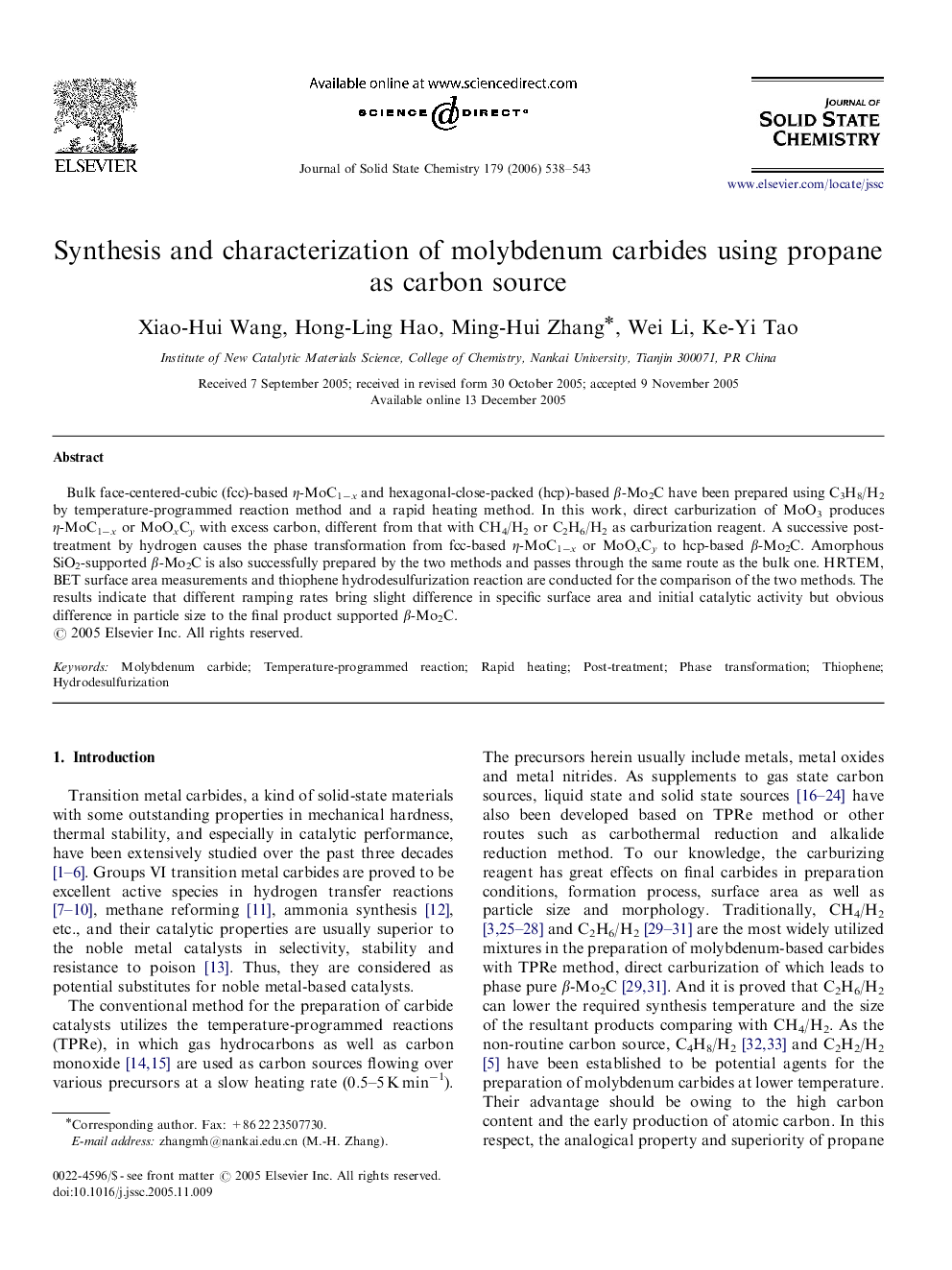| Article ID | Journal | Published Year | Pages | File Type |
|---|---|---|---|---|
| 1333998 | Journal of Solid State Chemistry | 2006 | 6 Pages |
Bulk face-centered-cubic (fcc)-based η-MoC1−x and hexagonal-close-packed (hcp)-based β-Mo2C have been prepared using C3H8/H2 by temperature-programmed reaction method and a rapid heating method. In this work, direct carburization of MoO3 produces η-MoC1−x or MoOxCy with excess carbon, different from that with CH4/H2 or C2H6/H2 as carburization reagent. A successive post-treatment by hydrogen causes the phase transformation from fcc-based η-MoC1−x or MoOxCy to hcp-based β-Mo2C. Amorphous SiO2-supported β-Mo2C is also successfully prepared by the two methods and passes through the same route as the bulk one. HRTEM, BET surface area measurements and thiophene hydrodesulfurization reaction are conducted for the comparison of the two methods. The results indicate that different ramping rates bring slight difference in specific surface area and initial catalytic activity but obvious difference in particle size to the final product supported β-Mo2C.
Graphical abstractA post-treatment by hydrogen causes the phase transformation of molybdenum carbides in both the conventional TPRe method and a rapid heating method. The HRTEM image shows fairly uniform particles of β-Mo2C display an excellent dispersion on amorphous SiO2 support.Figure optionsDownload full-size imageDownload as PowerPoint slide
